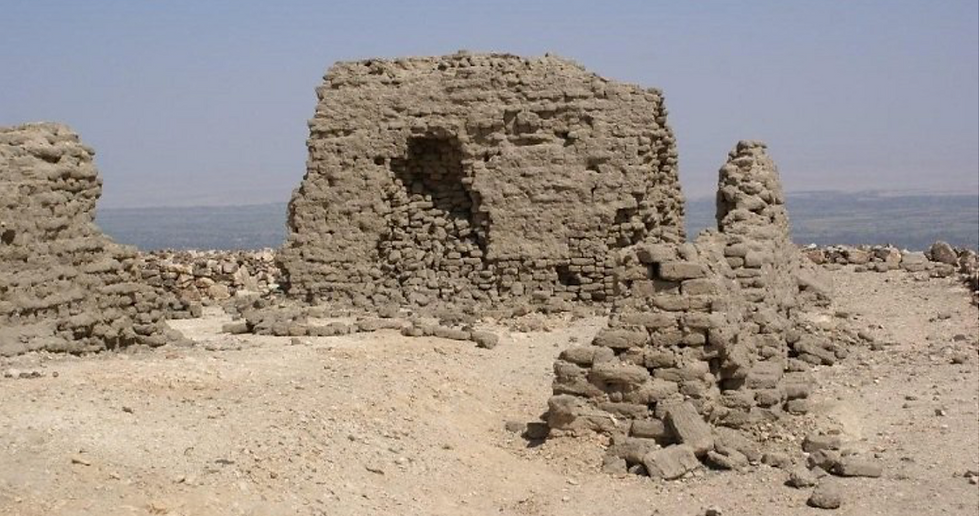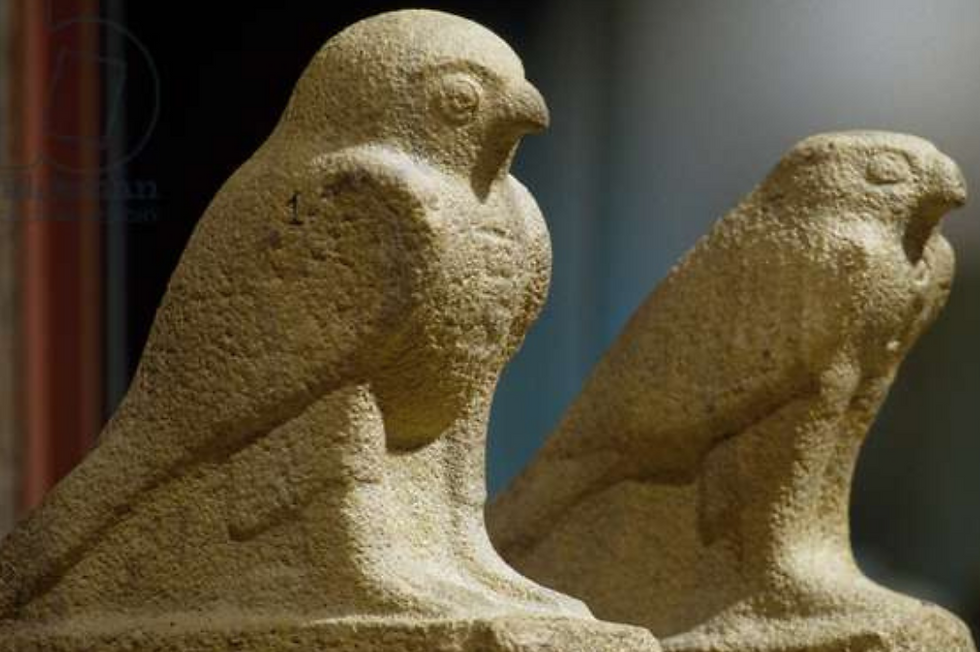The mystery of Thoth Hill
- Anna Sunneborn Gudnadottir

- Oct 24, 2022
- 4 min read
Thoth Hill is a hilltop temple that is located in the mountains on the west side of the Nile and is named after fragments of a statue depicting Thoth, the Egyptian god of wisdom, that Egyptologists found during the first excavation of the site.

The first excavation began at the beginning of the 20th century, and was led by British archaeologist Flinders Petrie. When he was excavating the building, he found a seated statue in an Osiride dress that was worn during Sed-festivals and as such he concluded that the structure was a Sed-festival chapel.
Through inscriptions on the ruins of the temple, researchers were able to confirm that the temple was built by Montuhotep III Sankhkara, the fifth king of the 11th dynasty (ca. 2055-1985) and reigned between 2009-1997 BE, and that the temple was dedicated to the falcon God Horus. This conclusion was reached based on 20 fragments found during excavations, including the limestone jambs from the entrance of the sanctuary with the royal titles of Montuhotep III Sankhkara and the dedication of the temples carved into it.
“Horus Sankh-towi-ef [Who Causes his Two Lands to Live], He of the Two Goddesses 'Who Causes his Two Lands to Live', The Peace- ful Golden Horus, The King of Upper and Lower Egypt Sankh-ka-Ra [Who Causes the Soul of Re to Live], Son of Re Montuhotep [The Peaceful Montu], Living Eternally. He made this as his monument to Horus, may he make to him given-life, like Re”.
But why is Thoth Hill so special?
The older remains are in fact the oldest recorded temple in the Theban area, but also the earliest recorded example of temple pylons in Egypt. The pylons run symmetrically across the primary axis of the temple. In addition to the above mentioned, Thoth Hill was an active site throughout Egyptian history. It might not have been constantly in use, but nevertheless it was used during different time periods by different peoples.

Under the 11th dynasty temple, Petrie found an older temple which dated to predynastic times (before 3100 BCE), who only recorded the remains as being below the sanctuary of the chapel. However, the later excavations showed that there were, in fact, also remains of the prehistoric temple under the other parts of the 11th dynasty temple and that there is evidence of the temple entrance having been moved with the building of the 11th dynasty temple. This indicates that something changed, and that the people who built the temple were aware of it.
There were some theories stating that the predynastic temple is just an earlier building phase of the Horus temple. However, as the two sanctuaries differ; the temples have fundamentally different architecture, the orientation of the temples are different and material culture are dated to vastly different time periods, and as such this theory has since been rejected.
In addition, the earlier temple was dated using early Dynastic ceramics and pre-dynastic stone implements which were found in situ in the prehistoric stone wall. In addition, inscriptions and ceramics dating from the early Dynastic time were found in the surrounding area. As such we can conclude that the area was in use long before the 11th dynasty. The two temple foundations - the archaic one and the one from the 11th Dynasty - differ in alignment. Archaeoastronomy (the multidisciplinary studies of how past people understood the phenomena of the sky and what role it played in their societies) shows that there is a two degree difference. This difference correlates to the change in the Sirius stars (which was associated with the God Horus) position between predynastic times and the 11th Dynasty.
This has resulted in several theories, amongst others that the temple was also in alignment with the rising and setting sun. As the temple is located on the highest point in the Theban hills, it could be a place of pilgrimage, or if visible from the settlement it could be a symbol of divine power. However, none of these theories have been proven, and as such should be considered with caution.
Just a temple on a hill or a tomb as well?

In the same hill that Thoth Hill is located on, researchers have found a man-made portal leading into a rock-cut tomb. The tomb is ca. 120 sq.m. and inside, researchers have found an opened sarcophagus, a secondary shrine and five chambers. Just like Thoth Hill, this tomb had been re-used during Coptic times (395 - 642 CE) as a monastery until it eventually fell out of use. Researchers have presented the hypothesis that this is actually the royal tomb of Montuhotep III Sankhkara, but no actual evidence that it is his tomb - except that Montuhotep III built the temple above - has ever been presented. If the theory is true, Montuhotep III’s tomb would be seen from all of Thebes as it is located on the highest point in the landscape and would align with the Sirius star as well as the rising and setting sun. Montuhotep III would forever be looking out over Thebes, as the god he was.
Text: Anna Sunneborn Gudnadottir. MENAM Archaeology. Copyright 2022.
Image credits: Thoth hill - qeajohn through megalithic.co.uk Floor plan of Thoth Hill - Petrie 1909 Horus statues - NPL - DeA Picture Library/s. Vannini/Bridgeman Images Further Reading: Petrie, William Matthew Flinders. 2013. ‘British School of Archaeology in Egypt and Egyptian Research Account Eighteenth Year, 1912.’ In Gizeh and Rifeh, Heliopolis, Kafr Ammar and Shurafa, 50-53: Cambridge University Press. Vörös, G. 1998, Temple on the pyramid of Thebes: Hungarian excavations on Thoth Hill at the temple of Pharaoh Montuhotep Sankhkara, 1995-1998, Százszorszép Kiadó és Nyomda, Budapest.





Comments